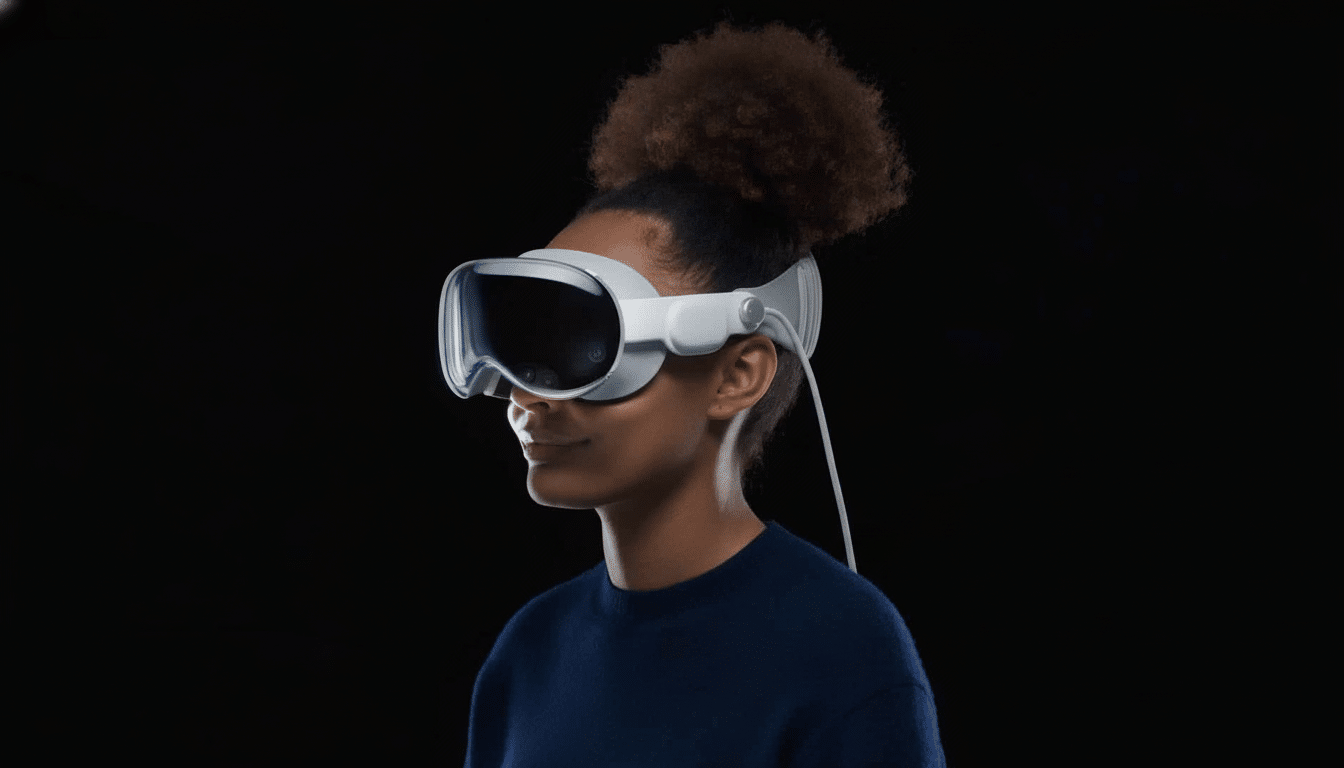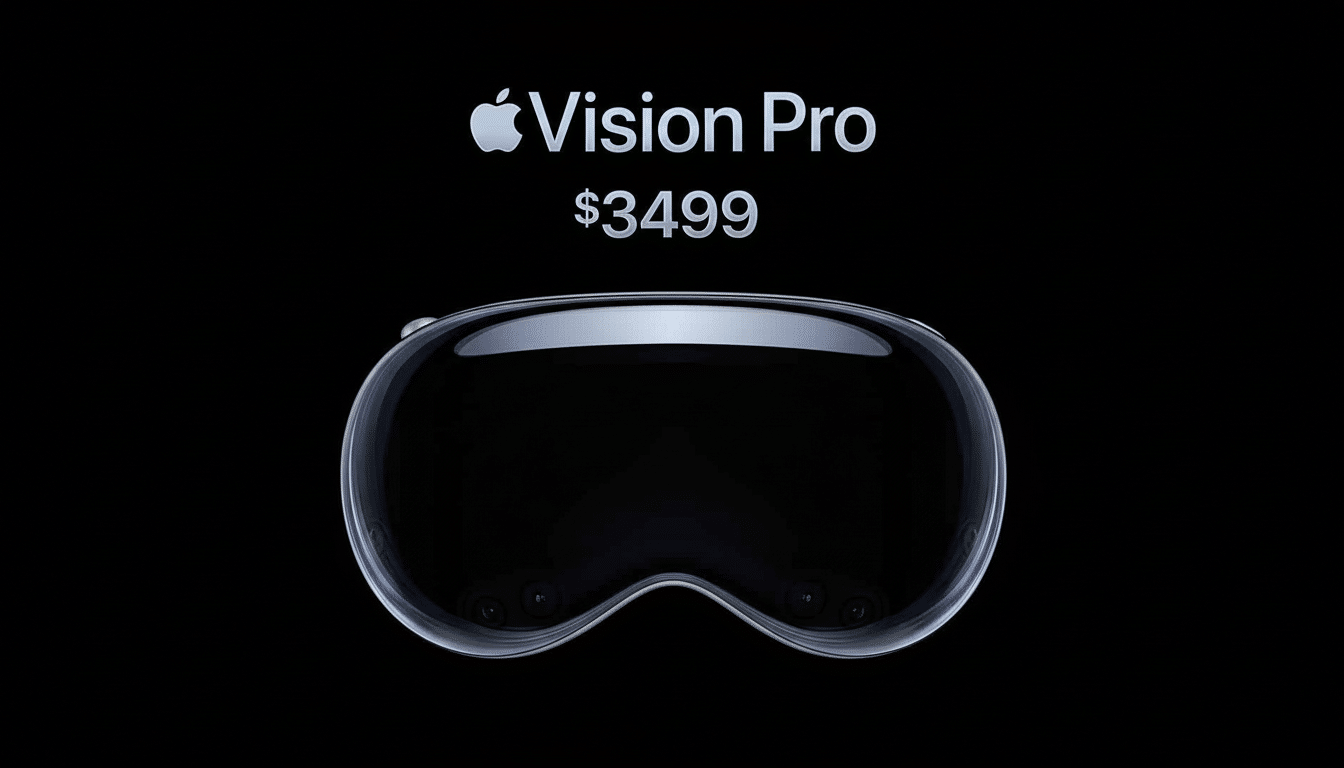Apple’s sophomore Vision Pro retains the same basic concept—fidelity-based mixed reality focused on ultra-accurate eye and hand tracking—but trades in the M2 for a vastly more powerful M5. The result is less a redesign and more a muscle boost, with the goal being firmly capable of handling heavier multitasking, brawnier 3D apps and smoother motion.
If you already own the original, which is being sold as a standalone product, the question is straightforward: Does it enable new experiences in the headset — or does it merely speed up what you do there?
- Performance and Apple Silicon: What the M5 Changes
- Display Quality and Motion Smoothness on M5 Vision Pro
- Design Refinements and Comfort Improvements in Daily Use
- Battery Life, External Pack Endurance, and Thermals
- Cameras, Storage Options, and Wireless Connectivity Details
- Software Updates and Ecosystem Impact Across Both Models
- Should You Upgrade from M2 Vision Pro to the M5 Model?
- Bottom Line: Is the M5 Vision Pro Worth It for You?

Here is what the M5 model does (or, really, doesn’t) change the game on:
Performance and Apple Silicon: What the M5 Changes
The processor leap is the big one. M5 replaces the original M2, and the R1 coprocessor stays on for sensor fusion work and low-latency tracking. Apple notes up to 2x faster performance in third‑party apps, which falls in line with what we’ve seen from recent Apple silicon on iPad and Mac.
For reference, consider what’s practical as per real-world data gleaned from nearby devices: on Geekbench 6, M2-based tablets have clocked in around the mid‑2,000s single‑core and under 10,000 multi‑core; in contrast, the M4 iPad Pro jumped aggressively to high‑3,000s single‑core and mid‑teens multi‑core. A headset’s thermals and power limits are different from the latter category, but Apple’s generational gains have been steady. That headroom does matter (especially for creators doing multi‑window 2D work with a spatial app, and running heavier frameworks like Unity or Unreal).
Expect the M5’s GPU and on‑chip neural engine to pay off in fields that were already marginal on M2: high-complexity scene rendering, more aggressive foveated rendering, faster on‑device ML for hand, eye and voice interactions. For developers building visionOS APIs, compile times should be shorter and there will be fewer frame timing spikes during testing — small quality-of-life improvements that you might eventually rely on.
Display Quality and Motion Smoothness on M5 Vision Pro
The micro‑OLED panels are the same: about 23 million pixels per eye, with a wide color display (Apple says roughly 92% DCI‑P3). Sharper, more contrasty picture with better color volume versus most consumer headsets is still a strength.
What you’ll notice is motion. On the three new models, Apple is allowing refresh rates to climb from 100Hz on the original to 120Hz on M5. This added headroom helps the system hit more consistent frame pacing, which reduces judder and aids comfort over longer sessions. It’s not a new panel (imagine it as the M5 releasing the display pipeline to get closer to its limits).
Why it matters: in mixed reality, as in VR before it, how consistent the stream of frames delivered is can be at least as critical as resolution.
Lower micro‑stutter when doing quick head turns or pinning up multiple floating windows around your space will help to make the experience feel more “locked” into the real world.
Design Refinements and Comfort Improvements in Daily Use
On the outside, not much has changed about the aluminum-and-glass shell. The most significant ergonomic difference is the new Dual Knit Band that combines the security of the original Dual Loop with the comfort of the Solo Knit. It spreads the load out over a larger area and helps to counteract that front‑heavy feel many early adopters reported.
On long days when you’re editing timelines, reviewing CAD models, or sorting through thousands of photos on a trip, those small comfort gains turn into real productivity increases. Industrial design hasn’t changed too radically, but the comfort of the straps can be the difference between picking up a headset again after the novelty wears off.

Battery Life, External Pack Endurance, and Thermals
Apple says the M5 Vision Pro can deliver around two and a half hours of mixed use or approximately three hours of video playback on the external pack — a bump of about a half hour compared with the M2 model. It’s not an all-day device, but it does take the sting out of shorter creative tasks and uninterrupted movies.
Thermal ability should keep clocks more stable under load with the M5, but only very slightly, thanks to further efficiency gains. The real story on a headset: consistent performance, with fewer dips when you’re layering multiple spatial windows or apps are going CPU and GPU at the same time.
Cameras, Storage Options, and Wireless Connectivity Details
Imaging and sensing equipment remain the same: 18mm f/2.0 stereoscopic main cameras, six world‑facing tracking cameras, and dedicated eye‑tracking modules. This means good news for capture quality — Apple’s spatial video continues to look class‑leading — and developers who will appreciate reliable sensor behavior from generation to generation.
Storage tiers are the same at 256GB, 512GB and 1TB. Wireless remains at Wi‑Fi 6 and Bluetooth 5.2. The price stays at $3,499 firm, with Vision Pro finding itself firmly in the premium camp while rivals such as Meta move to a distinctly more mainstream price point.
Software Updates and Ecosystem Impact Across Both Models
That’s why both generations are running visionOS 1, the latest version of the company’s software system for spatial computing, so features such as next‑generation refined hand‑tracking improvements, new window management and better shared experiences on‑device land here for everyone. The bonus for the M5 isn’t so much about gaining access to features, but ceiling: more sophisticated spatial effects, slicker remote desktops and sprightlier ML‑powered utilities.
For reference, creative suites and engines that have built on visionOS — say, Final Cut workflows for spatial video or Unity‑based productivity apps — see the most gains. Industry observers like IDC have noted for years that long‑term headset adoption seems to be driven as much, if not more, by compelling software than it is by hardware alone — and in this sense the M5 just offers that software more runway.
Should You Upgrade from M2 Vision Pro to the M5 Model?
If you’re already on M2, and primarily watch video, browse or use a few light apps, there won’t be transformational leverage. The experience will be roughly the same, just less ragged at the margins.
Upgrade calculus changes if you:
- Use intense 3D apps
- Keep lots of windows open at once
- Test or compile builds VR‑side
- Have a low frame‑pacing tolerance
With the accompanying band, higher refresh and tougher silicon, it comes together into a noticeably better daily driver for power users.
Bottom Line: Is the M5 Vision Pro Worth It for You?
Same vision, more power. Apple’s M5 Vision Pro isn’t reinventing the headset, but it meaningfully widens the performance envelope while relieving many of the comfort and smoothness complaints. For first‑time purchasers the math is simpler — this is the one to pick up. For M2 owners, it’s an upgrade of necessity rather than novelty: worth getting if your workflow regularly pushes the limits of what the original can deliver, no big deal if not.

